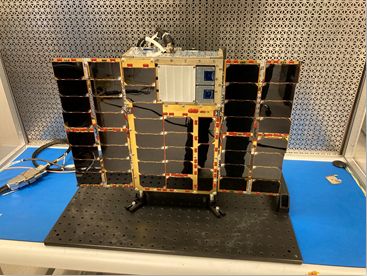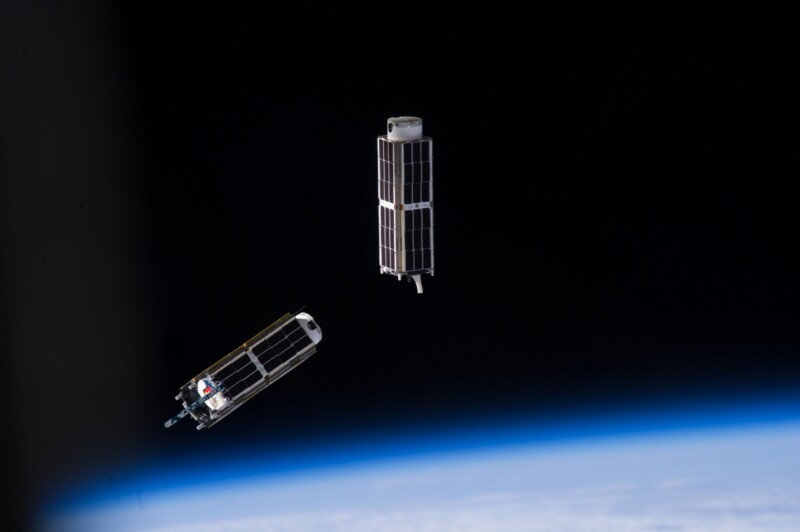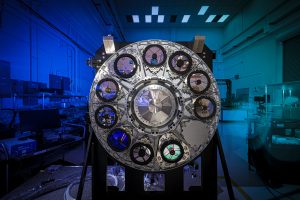
Engineering and
Technology Directorate
Capturing ETD
An engineering photography collection of the past, present and future.

SHOOT (Superfluid Helium On-Orbit Transfer) source and receiving dewars in the Shuttle payload bay of STS-57 during spaceflight.

Team prepping for insert of Adiabatic Demagnetization Refrigerator (ADR) system into spaceflight dewar at SHI (Sumitomo Heavy Industries) class 100 cleanroom facility in Japan.
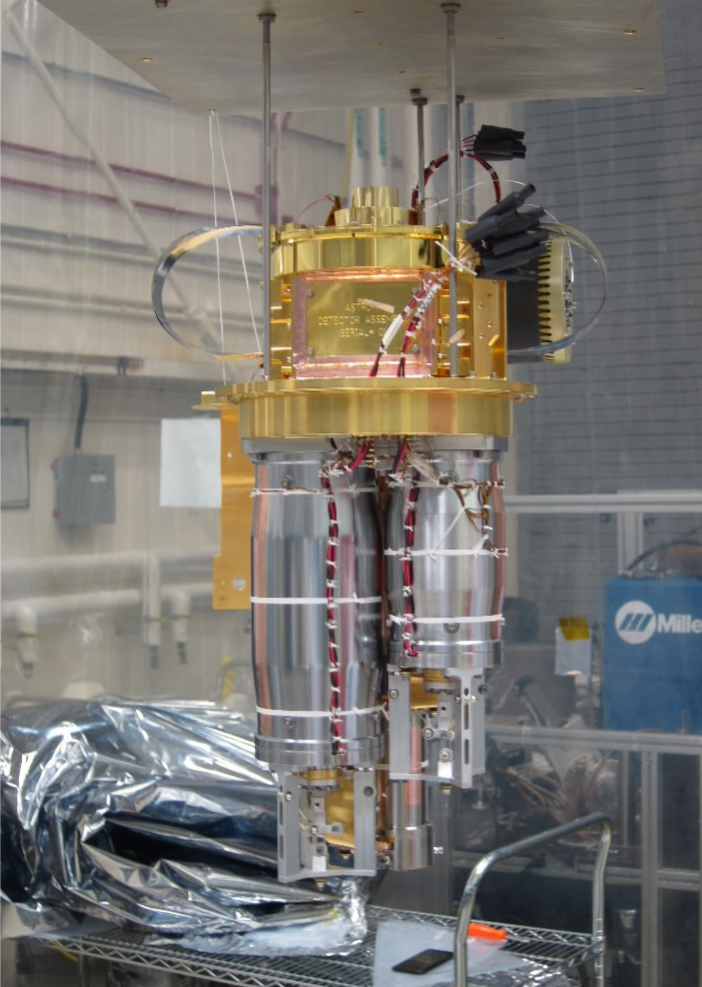
Profile view of Adiabatic Demagnetization Refrigerator (ADR) System suspended above performance test dewar in Cryogenic Research Integration Facility (CRIF) clean tent at NASA/GSFC.

X-Ray Imaging and Spectroscopy Mission (XRISM) Adiabatic Demagnetization Refrigerator (ADR) following placement in performance test dewar in Cryogenic Research Integration Facility (CRIF) clean tent at NASA/GSFC.

Mid-Infrared Instrument (MIRI) Cryocooler with Environmental Shield Heat Exchanger in laboratory at Northrop Grumman Facility.
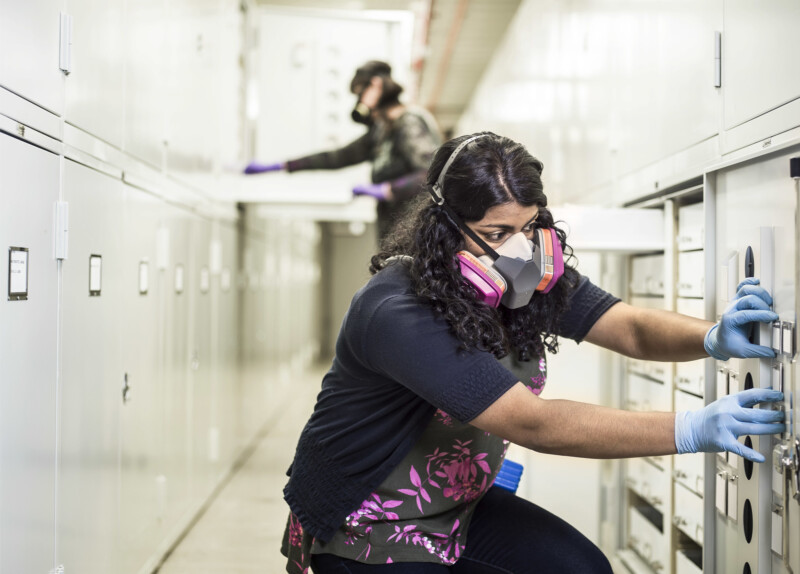
NASA Thermal Coatings Engineer Nithin Abraham removes samples treated with a patent-pending adsorber from specimen-storage cabinets at the Smithsonian’s Museum Support Center in Suitland, Maryland, a sprawling storage facility that holds more than 54 million collection items. Credits: NASA/Goddard/Chris Gunn.
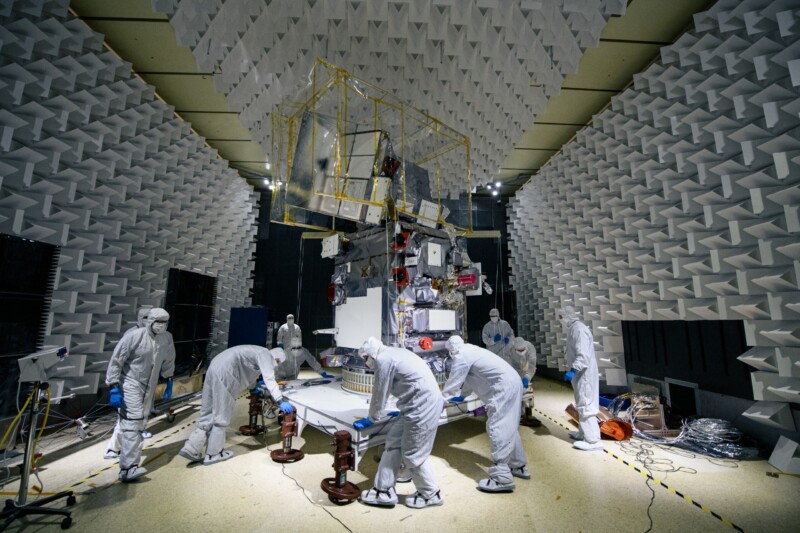
Technicians move the Plankton, Aerosol, Cloud, Ocean Ecosystem (PACE) observatory inside the Electromagnetic Interference Testing Facility at NASA's Goddard Space Flight Center in Greenbelt, Maryland on January 30, 2023.
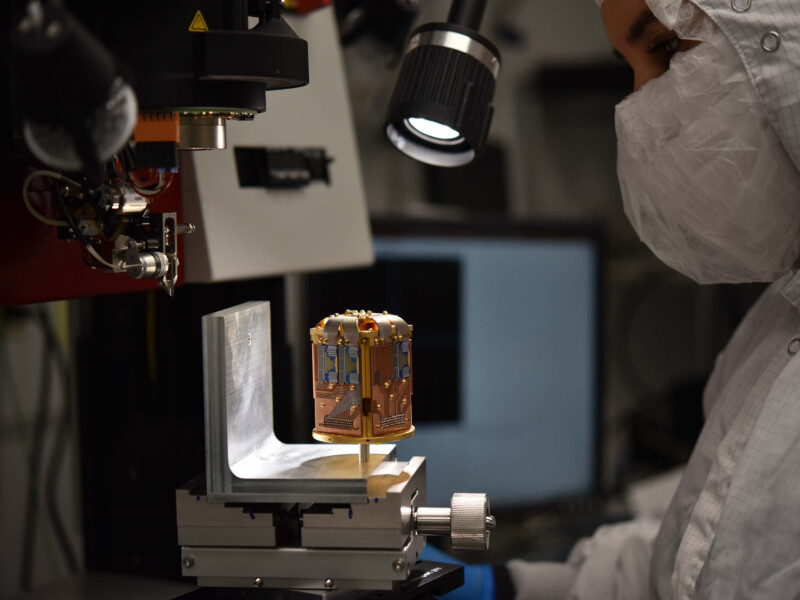
NASA Engineer Samelys Rodriguez, Code 553, wirebonding the compact assembly for uation of prototype x-ray microcalorimeters and multiplexed, cryogenic amplifiers for ATHENA X-IFU (the Advanced Telescope for High Energy Astrophysics X-ray Integral Field Unit). Credit: NASA/Nicholas Costen
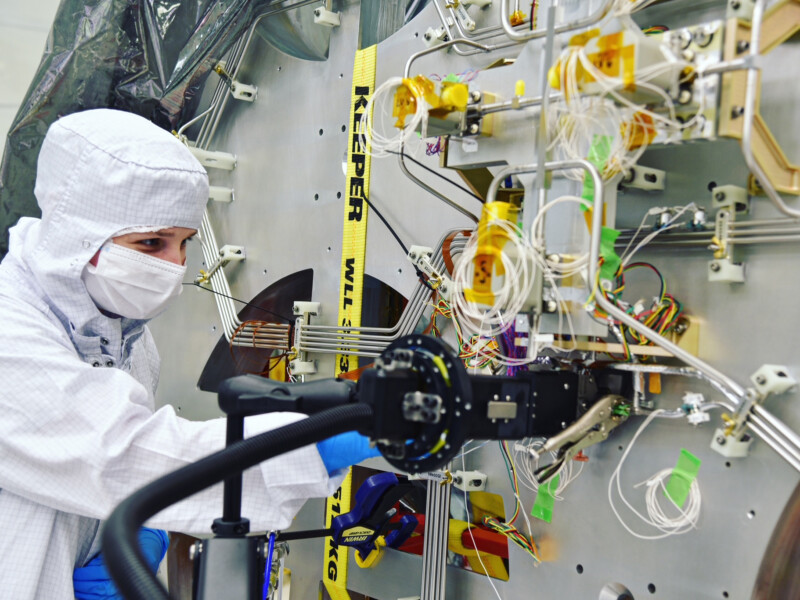
NASA Engineer Melissa Harris, Code 597, orbital welding for Roman Space Telescope propulsion subsystem. Credit: NASA/Melissa Harris
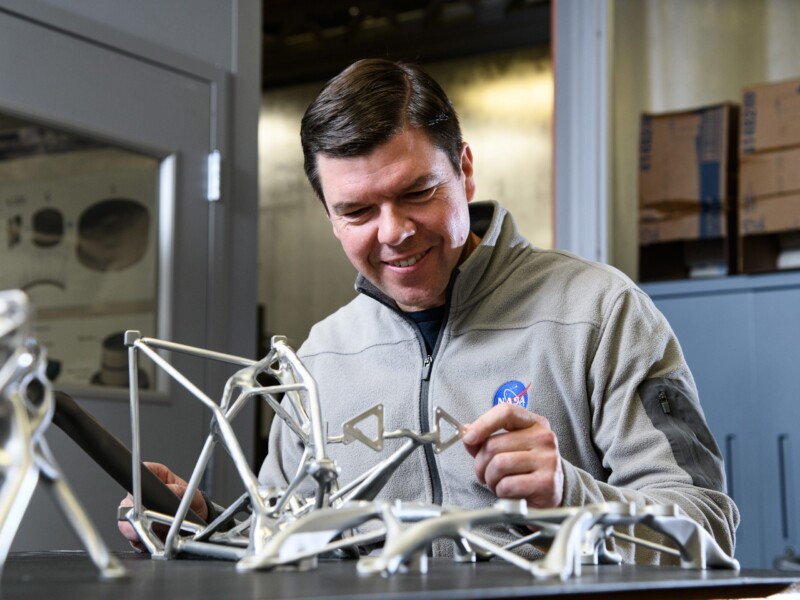
NASA Engineer Ryan McClelland, Code 550, examines structures designed by an AI for various missions. Most products are milled out of solid blocks of aluminum (center) though others have been produced by 3D printing titanium (darker structures). Credit: NASA/Denny Henry

Engineer conducts an inspection on NASA’s James Webb Space Telescope in the clean room at NASA’s Goddard Space Flight Center in Greenbelt, Md. (Credit: Chris Gunn / NASA)
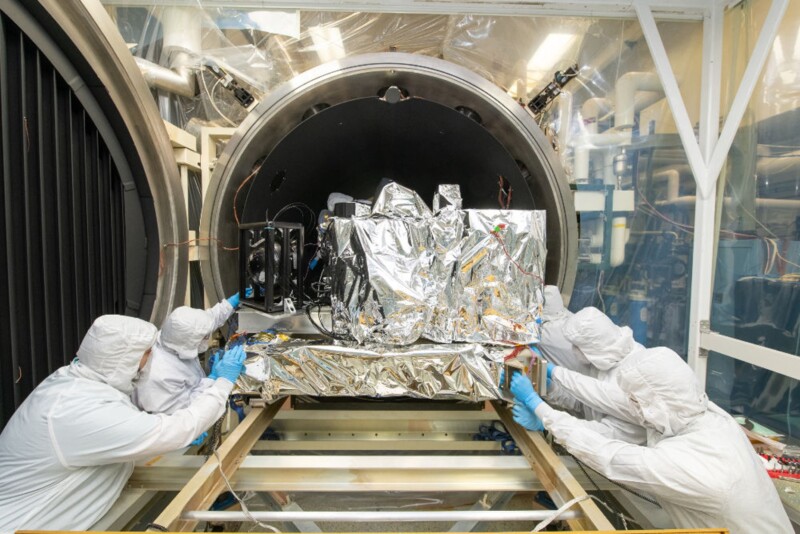
The Ocean Color Instrument (OCI) is PACE’s primary sensor and is a highly advanced optical spectrometer that will be used to measure light properties over the electromagnetic spectrum.
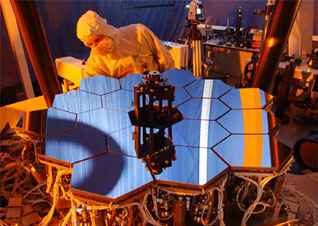
The JWST Test Bed Telescope (TBT) is a 1:6 scale model of JWST’s
telescope with the full sensing capabilities and control authority, located at Ball
Aerospace.
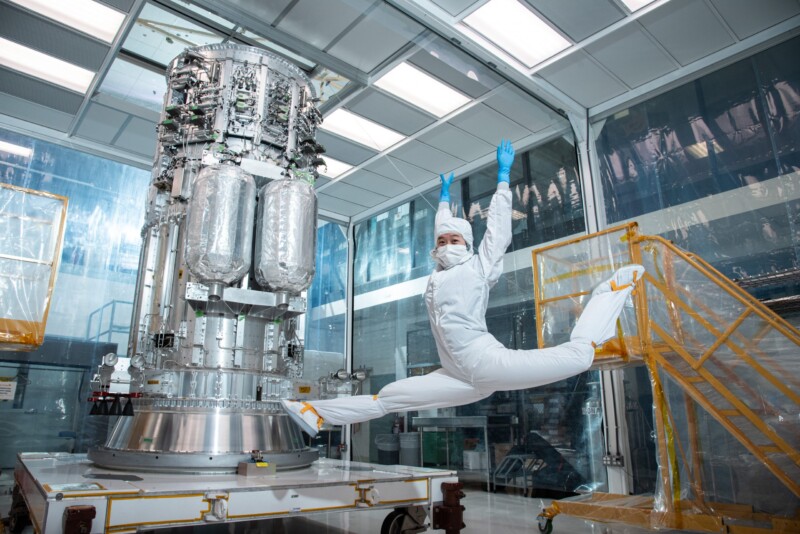
Wanyi Ng is a propulsion engineer in Code 597 at NASA Goddard Space Flight Center (GSFC). She is pictured in front of the Europa Clipper propulsion subsystem. The photo was taken in the building 11 clean room at the end of her team’s integration and test campaign at GSFC right before the subsystem’s delivery to the Applied Physics Laboratory for further integration. Photo Credit: NASA / Denny Henry





